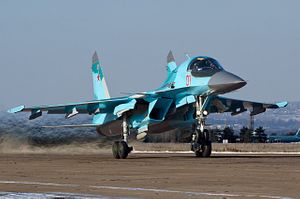Russia has long been an established international weapons exporter. Russian weapons are present in almost all war zones today, and fill arsenals in states as varied as Poland, Iran, and Venezuela. Mozambique has even put the ubiquitous Russian-designed AK-47 in its flag. According to SIPRI’s 2014 statistics, Moscow remains the second-largest arms exporter in the world, trumped only by the U.S.A.
However, it seems like business might be getting worse these days. Many of Moscow’s traditional customers are either trying to develop their own indigenous weapons or have been cut off from Russian military hardware all together due to sanctions. Almost all of the European states that used to be allied with the Soviet Union, and therefore large recipients of Soviet/Russian armaments, are increasingly buying western-made equipment (with the notable exception of Belarus). While this has been an ongoing trend for several years, it is interesting to note that the last transfer of Russian weaponry to a former Soviet satellite in Europe, in this case Poland, took place in 2014, just before NATO/EU imposed sanctions on Moscow came into effect following Moscow’s intervention in Ukraine.
To compensate for the loss of western export markets—not only for its weapons, but also for its crucial hydrocarbons and rare earths—Russia has attempted to strengthen its economic ties with Asian states, especially China. One very obvious example of this is the massive oil and gas deal signed last year.
Armaments are an important part of this relationship. Since the end of the Cold War, Asia has been Russia’s largest market for weapons’ exports; 60 percent of all Russian arms exports have gone to Asian states, with India and China in particular commanding a large percentage of these orders. As a share of total Russian arms transfers from 2010 to 2014, India and China represented 39 and 11 percent, respectively.
China’s history of importing Russian military equipment is not new. Since the proclamation of the People’s Republic in 1949, China’s military hardware has basically consisted of either imported Soviet/Russian equipment or licensed-produced knockoffs. Although this was supplemented by hardware from other states–notably Israel–following Deng Xiaoping’s reforms, Russia is still China’s largest external provider of military equipment. (As an example, Beijing is set to purchase Russia’s S-400 Triumf missile defense system.)
However, as reported recently by the Diplomat, Beijing is now in the process of developing an indigenous, high-tech defense industry (see here, here and here). Much of the technology in People’s Liberation Army’s platforms is based on imported (or stolen) Russian technology. China today has the capability to reverse engineer even the most sophisticated foreign military hardware. China has also been exporting some of this equipment to states which have traditionally imported Russian materiel. This in turn undercuts Moscow’s own exports, both to China and to other customers who are purchasing cheaper, lower quality Chinese military hardware.
India is another large-scale customer of Russian kit. Delhi is the world’s third largest armaments importer, with Russian equipment making up almost 75 percent of its total imports from 2004-2013. However, this may soon change. Many Indian observers have raised concerns that the country is too dependent on Moscow for its defense needs, and advocate for a diversification of its military imports. In this, India has an important advantage over China: Beijing is still subject to western sanctions on military hardware over the 1989 Tiananmen Square massacre. India does not face the same constraints. In 2014, the U.S. actually supplanted Russia as Delhi’s number one armaments provider, with the total value of U.S. imports jumping from $200 million in 2009 to $2 billion in 2014.
Furthermore, Prime Minister Narendra Modi has stated that India needs to develop a domestic, high-tech arms industry as a part of the ambitious “Make in India” initiative. This has already resulted, among other things, in the new, indigenously produced 155mm Dhanush field artillery and the Vikrant-class aircraft carrier, the second of which is currently under construction.
All of this bodes ill for Russia’s arms exports to India. In response, Russian arms manufacturers are attempting to make up the decline by selling to other Asian states. According to Pyotr Topychkanov at the Carnegie Moscow Center, Russia has a chance to expand deals with Vietnam, Indonesia, Malaysia, Myanmar, Bangladesh and Pakistan. However, Topychkanov adds:
I wouldn’t be overly optimistic regarding Russia’s opportunities in Asia. Oil exporters like Vietnam have realized their need to review military demands, and other arms exporters are becoming more aggressive in the arms market, and flexible in establishing contacts with nations they previously viewed as unacceptable trade partners.
Russia has been one of the dominant arms exporter in the Asia-Pacific. Many of Moscow’s products are still in high demand, and it will remain an important supplier for the foreseeable future. However, Russia will have to contend with the fact that other states are either developing their own weapons or diversifying their weapon imports.

































